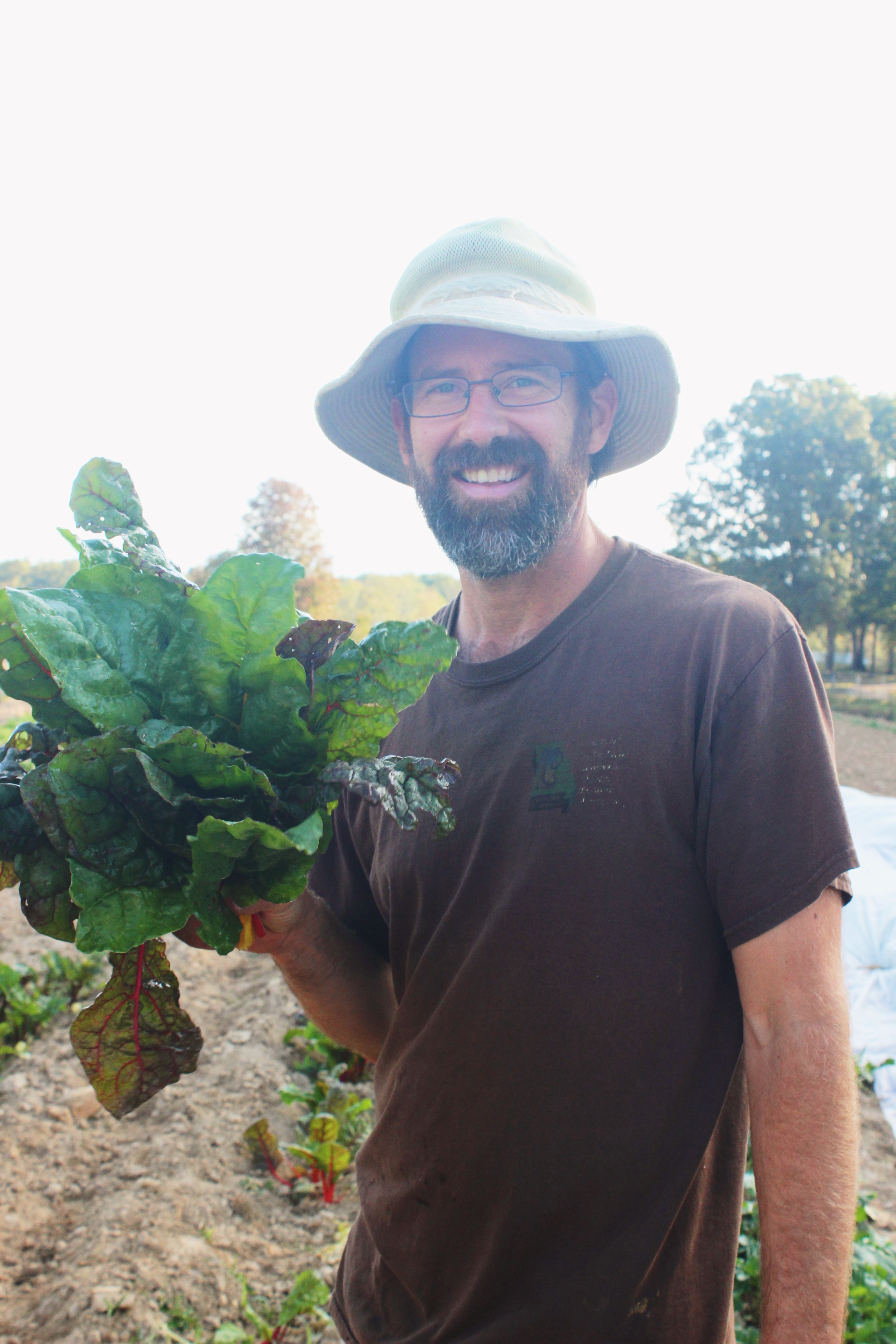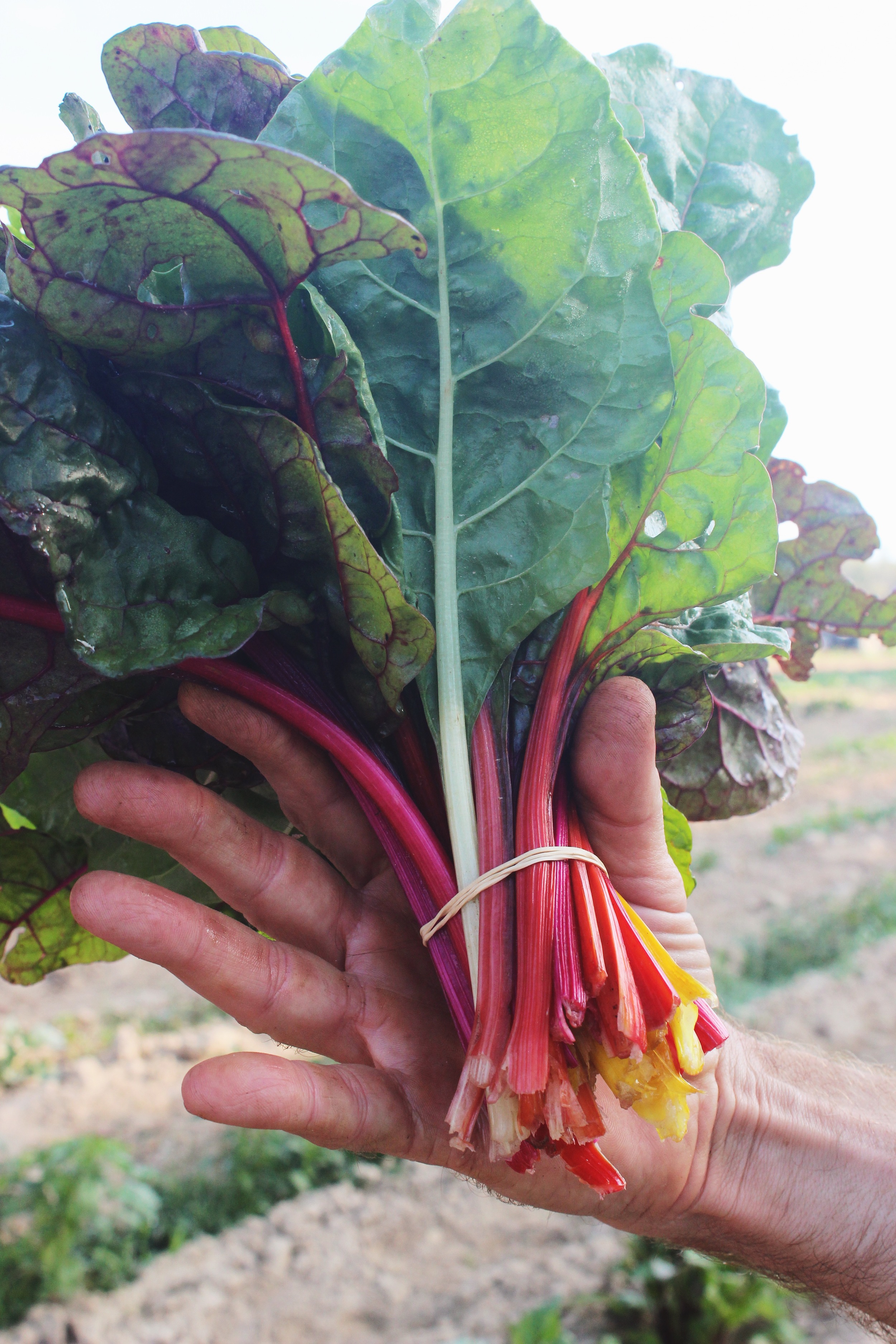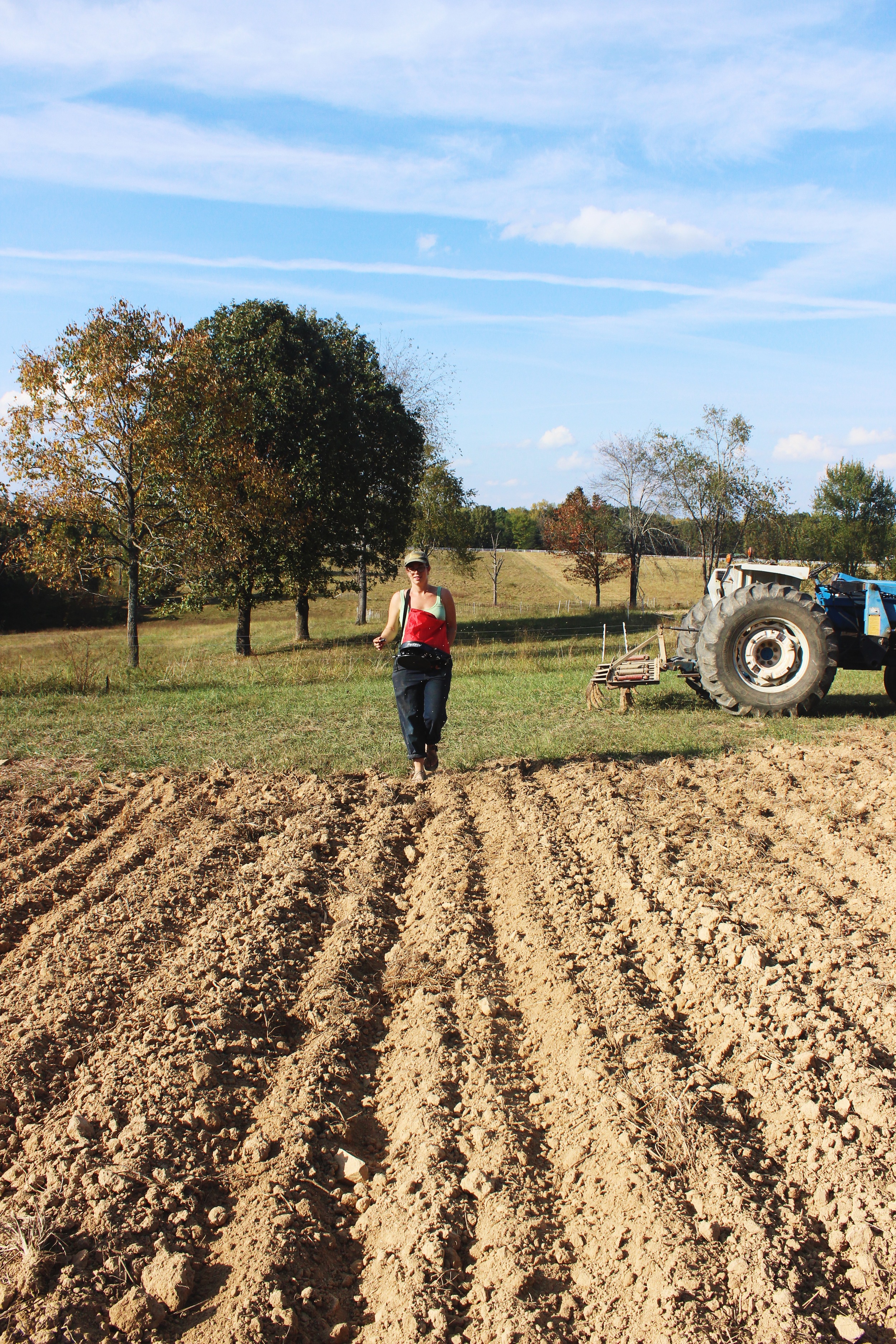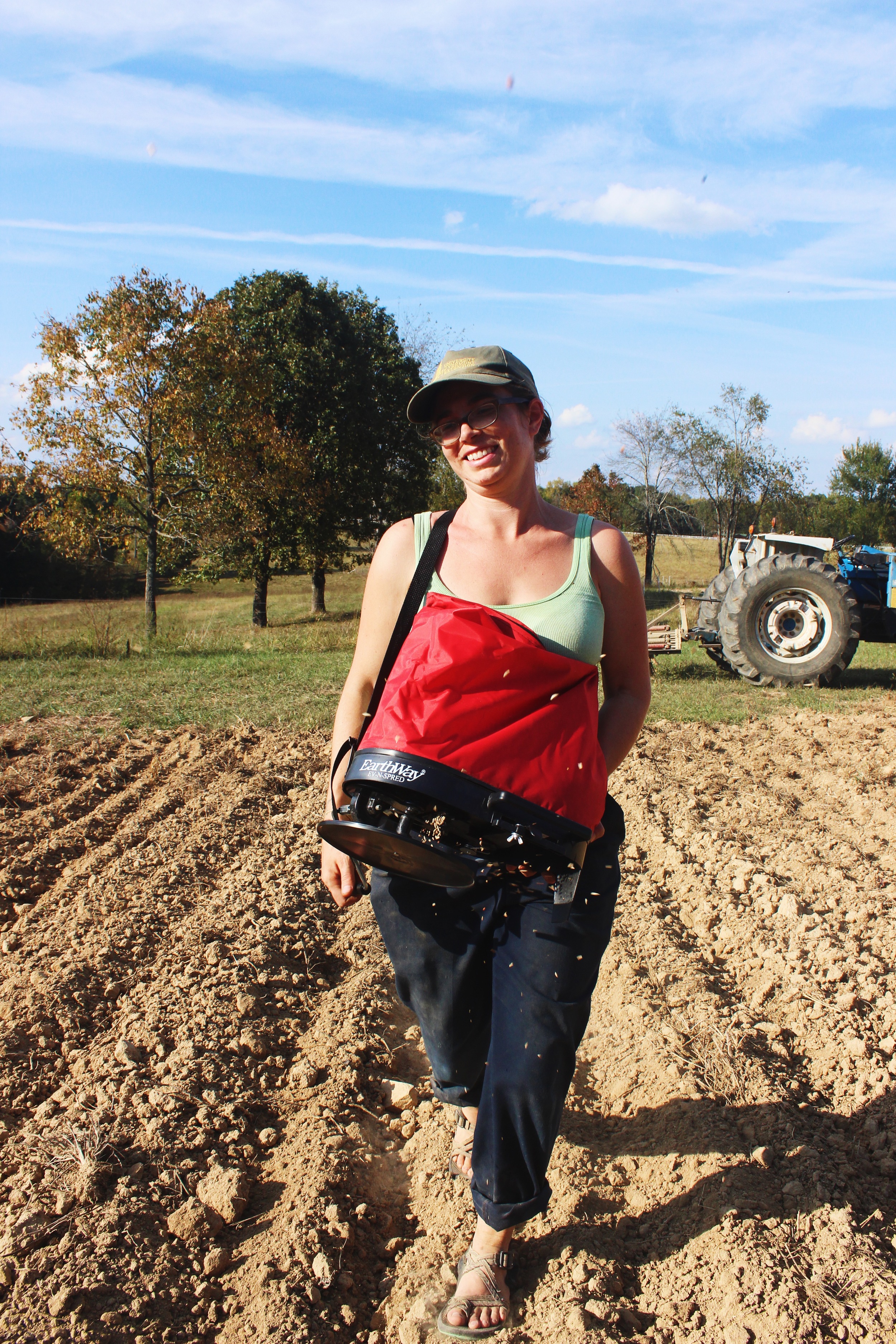WWOOFing and harvesting
This post could also be titled, "Learning how to not ruin the plants and greens when pulling them out of the ground or chopping them," but that might be too long.
Yesterday was the first morning in three Mondays where I didn't get up at 7am (well, more like 7:30am if we're going to be honest) and have some fresh duck eggs for breakfast prepared by Jesse, go out and check on those ducks, put water in their kiddie pool and fresh food in their bowl, and then go help Lizzie harvest.
I remember when first talking to Lizzie on the phone, she asked me questions about my experience harvesting. I think I grew a sweet pea plant for a school project one year, does that count? Not so much. She said something also about hoeing and plowing. I realized that I have heard the words, and know they have to do with farming, but I've never participated in them and had no idea how that even looked. Thank goodness for Google Images. In any case, I felt I at least could learn.
After arriving on the farm, I remember going out the first morning and seeing the field we would be "harvesting." I thought to myself, "What/Where are we harvesting?" In my mind I imagined the obviousness of cornstalks growing out of the ground. And while there were tall stalks of okra growing in one area, from the distance I was standing (and maybe it's also because I wasn't wearing my glasses to sharpen things up) it just looked like there were some greens in various lines along the dirt, and some white blanket-like covers.
Lo and behold, the "some greens" turned out to be a lot of greens. Just like the sweet potatoes I talked about last time — which were hidden under a lot of what looked like dead vines — there were more plants/food like radishes and turnips hidden beneath the dirt. A whole lot more greens were revealed under the white blankets as well (the blanket is used for protection against certain bugs and extreme weather).
Because it's the end of the season, harvesting and planting were not as demanding or intense as it might have been just some weeks before. The weather was beautiful most days, and we had time to enjoy being out in the field.
Harvesting at first was really slow for me. I was really tedious about picking anything out of the ground, asking Lizzie almost every moment if something like a radish was large enough to take out. For those plants that are hidden in the dirt, you have to dig around it to see if it's ready and large enough to join the bunch. And it's kind of sad and disappointing when you pick something thinking it's a good size but it's still a baby and you've basically just ruined it's life.
And then there's other plants — the "greens" — where you take a knife and just cut from the stem near the bottom.
In time, I was a little more speedy. I was almost matching Lizzie at one point in making bunches of mazuna. Kind of.
In essence, it's been one of the greatest joys these last few weeks in understanding what goes into planting and harvesting, and being part of each process. I definitely now know what a hoe and a plow is. So you could say I've come a long way.
I've been asked what exactly we've been harvesting on Sugar Camp Farm, and although you can find a list on their website, I've also compiled a little photo journal below with a little video (yay!) of Lizzie explaining the process of harvesting pink beauty radishes (it's a fitting name considering they're pink, beautiful, and radishes).
Radishes
So first and foremost: Radishes. These are actually my favorite thing to harvest. We had a whole variety to choose from including specialty radishes — black radish, daikon radishes, and watermelon radishes — (these are the ones Lizzie has in her hand in the above photo).
They can be difficult to pull out of the dirt sometimes — on my first day harvesting, while trying to take a daikon radish out and avoid getting my pants dirty (pretty much impossible I discovered), I had to use all the strength I had and when it finally gave way, I lost my balance and ended up sitting/falling-flat on the dirt. Even though I fell, it felt like quite the accomplishment. And after that, I started to accept that if I kept worrying about getting dirty, things were not going to get done.
Below is the video* explaining the process of harvesting — which is applicable to most items we harvest: pull out of the ground —> take off bad leaves —> add to a bunch —> get it washed —> send it to market! — with the pink beauty radishes.
*video was edited because I didn't realize (in the original video) I showed a turnip being washed versus a radish. Still learning!
The Greens
I really loved harvesting greens too. There was such an ease with it. Unlike harvesting something like radishes, that were in the dirt, with greens I "just" (making it sound sooo easy because I'm that experienced now (but not really)) take a knife and cut at the stems. And voila! You can now make a salad! Or a stew! Or whatever else you want!
AND THE COLORS! Some "greens" were so bright and brilliant!
Dill
I actually don't know much about harvesting dill. Lizzie did this on my last day with a former WWOOFer and now visitor and helper Megan (who was awesome!), and I just took pictures. I also ate some, and it was splendid. Tasted just like a dill pickle.
Cherry Tomatoes
These things are delicious. I mean really really. I sort of loved finding ones that had split open already because that meant I could eat them (they weren't presentable enough to be sold). We went up and down the aisles and picked the red and orange-yellow ones. This is more of a summer crop, so Lizzie was surprised they lasted so long. But we were both so glad they did.
Okra
Let's talk about this plant. I've never even heard of okra before this experience. And then... it became my favorite thing. You just snap it off the plant stem. I felt like an old-time gatherer — my basket set on one hip, going through the okra aisle and picking it off, placing it in my basket. Lizzie had me try it straight from the plant. And I wasn't too too fond of it at first. It can be a little slimy raw.
But then Jesse cooked it — sliced it vertically — and added some salt and soy sauce and I was in love. I ate it for every meal one day because I LOVE IT THAT MUCH. I'm so sad that it's the end of the season for this plant.
While Lizzie and Jesse have been enjoying it for months so their love wasn't exactly as enthusiastic as mine for eating it 24/7, I enjoyed it for just a couple weeks. SPRINGTIME WILL COME SOON ENOUGH. And okra, we will meet again.
Beans
More specifically, kidney beans and black beans. We pulled the plants straight out of the ground, and then Lizzie and I sat on the porch shucking them for a good amount of time. One day, I spent two hours shucking — opening the pod and putting them in the jar — and went through one yellow container and got a "whopping" load of ONE QUART.
My appreciation for beans has grown remarkably.
Peas
On one of my last days on the farm, we put trellises in so the sweet peas had something to cling and grow onto. This was more of a preparational thing, but I'm excited for them to grow! It was cool to see how easily and quickly their little tendrils clung onto the provided string.
You can also see in these photos another valuable helper, Jesse's dad Tony. Who may be one of the kindest human beings ever.
Weeds
Obviously this isn't something we "harvest," but more like something that needs to be monitored and taken out. Tony is standing with some overgrown pigweed below which can catch you off guard (they usually aren't that big) and hurt you because of it's thorns.
Cover Crop
Cover crops are important to invigorate the soil and provide a balanced ecosystem. From what I understand (which is a little limited because I didn't have my notepad when Lizzie was more thoroughly explaining this), she mixed seeds together and spread it over the soil. The best part about this was putting your hand through the seeds. It was the most relaxing texture for some reason.
In addition to some other crops we harvested that I didn't mention like eggplants and peppers, this encompasses a lot of what I did for three weeks.
The great thing about farming is that it can change year to year. Since this was Lizzie and Jesse's first year, they've really learned a lot about what crops work and what don't, and have the ability to be creative and experiment with new crops.
Hope you learned a little more with me.
Until tomorrow...
Love,
Maddie




































